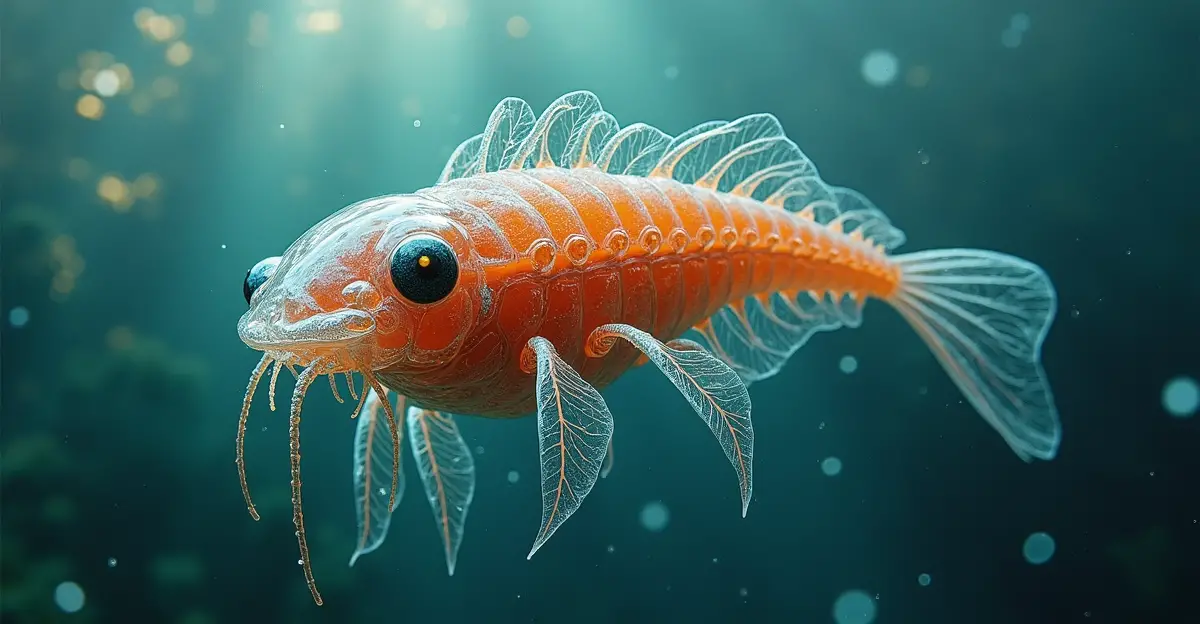Welcome to the fascinating and often overlooked world of zooplankton, the tiny organisms that carry the weight of aquatic ecosystems on their delicate, drifting shoulders. It’s incredible to think that these microscopic creatures play such a pivotal role in the food web. Zooplankton live in oceans, lakes, and rivers, drifting through the water as silent, unassuming connectors between the primary producers, like phytoplankton, and the larger aquatic predators.
But the real question is: What are these microscopic creatures eating to sustain themselves and, in turn, sustain entire food chains? Their lifestyle might be miniature in scale, but their appetite, and its ecological importance, is anything but small.
The Zooplankton Diet: A Diverse Palate
When it comes to their menu, zooplankton have surprisingly versatile tastes. Let’s take a closer look at their diet and explore the fascinating things that make up their meals.
Phytoplankton – The Main Course
At the base of the aquatic food web are phytoplankton, tiny plant-like organisms that derive their energy from sunlight. For most zooplankton, phytoplankton are the equivalent of a classic salad: fresh, nutrient-rich, and often plentiful. By consuming phytoplankton, zooplankton help transfer the energy created by photosynthesis to higher levels of the food chain.
It’s a straightforward yet essential relationship. Without zooplankton feeding on these primary producers, the flow of energy to larger animals like fish, seabirds, and even whales would break down. As explained in ‘What are plankton? – NOAA’s National Ocean Service’, phytoplankton and zooplankton form the backbone of aquatic ecosystems.
Other Zooplankton – Cannibalistic Cravings
Interestingly, some zooplankton species take a page out of Darwin’s survival-of-the-fittest handbook and feed on each other. From tiny protozoans devouring bacteria-sized species to larger crustaceans hunting smaller zooplankton, it’s a case of predator and prey on a microscopic scale.
Does that sound harsh? It’s all about survival in the aquatic world, and to be fair, zooplankton aren’t choosy. This cannibalistic behavior ensures they have enough protein to sustain themselves when other food sources become scarce.
API STRESS COAT Aquarium Water Conditioner 16-Ounce Bottle
Tetra AquaSafe Plus, 8.45 Ounces, aquarium Water Conditioner And Dechlorinator, Model Number: 46798162681
$10.19 (as of November 13, 2025 23:01 GMT +03:00 - More infoProduct prices and availability are accurate as of the date/time indicated and are subject to change. Any price and availability information displayed on [relevant Amazon Site(s), as applicable] at the time of purchase will apply to the purchase of this product.)API TAP WATER CONDITIONER Aquarium Water Conditioner 16-Ounce Bottle
$8.48 (as of November 13, 2025 23:06 GMT +03:00 - More infoProduct prices and availability are accurate as of the date/time indicated and are subject to change. Any price and availability information displayed on [relevant Amazon Site(s), as applicable] at the time of purchase will apply to the purchase of this product.)Detritus and Organic Matter – Nature’s Leftovers
Another item on the zooplankton menu is detritus, a mix of non-living organic particles floating through the water. Think of it as marine leftovers: the remains of dead organisms, decomposing plant matter, and other particles that drift through the current.
Zooplankton transform this detritus into food, meaning they essentially act as recyclers of the water’s nutrients. It’s a fascinating, and often overlooked, way they contribute to the ecosystem’s overall health.
Bacteria – A Microscopic Feast
For the smallest zooplankton, such as ciliates and flagellates, bacteria offer a nutrient-dense meal option. These organisms graze on the tiny bacteria that form an important part of aquatic microbial communities.
While bacteria may not sound appetizing, they play a critical role in the world’s oceans. They break down organic material, recycle nutrients, and even contribute to the global carbon cycle. And all of this, in turn, fuels the diet of zooplankton.
How Do They Eat? Special Techniques for Tiny Eaters
Feeding at such a microscopic level requires a diverse range of techniques. Zooplankton may be small, but they’re equipped with clever strategies to collect their meals.
Filter Feeding – A Sweeping Success
Many zooplankton rely on filter feeding to gather food. This process involves pushing water through specialized appendages to trap tiny food particles, such as phytoplankton or bacteria. Imagine sifting sand to find flecks of gold, except in this case, the treasure is nutritious microscopic algae.
Grabbing and Grazing – Targeted Feeding
Not all zooplankton rely on passive feeding techniques. Some actively hunt for their meals, using miniature appendages to grab smaller prey or pick off food from surfaces.
To picture this in action, think of a miniature predator scouring its environment with an almost surgical precision. For an organism so small, their ability to target specific food sources is surprisingly efficient.
Why Does Their Diet Matter?
The diet of zooplankton doesn’t just sustain them; it sustains entire ecosystems. Their role as middlemen in the aquatic food web is essential. Their consumption of phytoplankton ensures energy moves from primary producers to larger predators, like fish, seabirds, and even whales.
But there’s more to their diet than just energy transfer. By consuming detritus and bacteria, zooplankton contribute to nutrient recycling and play an important role in the aquatic carbon cycle. These tiny creatures essentially act as cleaners and recyclers, ensuring that no nutrient goes to waste.
Fun Facts About Zooplankton Eating Habits
- Daily Migrations: Many zooplankton perform a daily migration, rising to the surface at night to feed and sinking deeper during the day to avoid predators. This vertical movement is one of the largest migrations on Earth, even though it’s happening on a microscopic scale…
- Adaptable Diets: Some zooplankton species can shift their diet depending on food availability. This adaptability ensures their survival in different environments and seasons.
- Bioluminescent Feeds: Certain zooplankton have the ability to glow, a phenomenon known as bioluminescence. While the exact purpose of their glow remains debated, it may play a role in food-related behaviors like luring prey or deterring predators.
Additional Insights into Zooplankton and Aquatic Food Webs
To further support the multifaceted role of zooplankton in ecosystems, check out the YouTube video below:
Conclusion
Zooplankton may be small, but what they bring to the table, literally and figuratively, is enormous. Their diets are as diverse as the ecosystems they inhabit, ranging from plant-like phytoplankton to organic detritus, tiny bacteria, and even each other.
Their ability to sustain larger predators, recycle nutrients, and support the aquatic carbon cycle highlights their profound impact on life both in and out of the water. Without these tiny organisms, entire food chains would collapse, and the oceans we know today would look vastly different.
So, the next time you gaze at a body of water, take a moment to appreciate the invisible diners beneath the surface. Their appetites might be microscopic, but their contributions are anything but small.

Hi, my name is Sean, and I’m the primary writer on the site. I’m blogging mostly about freshwater and saltwater aquariums, fish, invertebrates, and plants. I’m experienced in the fishkeeping hobby for many years. Over the years I have kept many tanks, and have recently begun getting more serious in wanting to become a professional aquarist. All my knowledge comes from experience and reading forums and a lot of informative sites. In pursuit of becoming a professional, I also want to inspire as many people as I can to pick up this hobby and keep the public interest growing.
Read more about Sean.
Please join also my Facebook group.




















